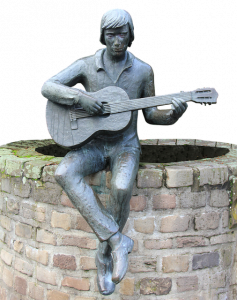It is common for musicians to suffer from back problems as a result of bad posture. Experts have even attributed poor posture as one of several causes of performance anxiety.
Good Posture is a Must for Musicians
A budding guitarist may slouch, while often looking down to ensure his fingers are appropriately positioned on frets. Aspiring violinists have more problematic positioning habits to deal with, which if not corrected early may even result to neck and shoulder injury. Repeated or prolonged bending of the neck and jaw to the left, while keeping right shoulder girdle slumped for hours are also the most common causes of upper back pains.
Problems worsen if during non-practice hours, a musician keeps a poor posture. Some consider buying ergonomic chairs, including bean bag chairs puffed up with the best bean bag filling, thinking they are better than the ordinary chairs. Yet changing chairs will not solve the problem. Changes must come from the person.
Postures to Keep in Mind When Playing Guitar
 The standard guitar playing posture is to seat with your back straight, arched a little slightly, while the chest is thrust outward. Do not push your chest too far, make it just enough to lengthen your spine, as overdoing will arch your lower back. You know you are doing it right if your back releases tension.
The standard guitar playing posture is to seat with your back straight, arched a little slightly, while the chest is thrust outward. Do not push your chest too far, make it just enough to lengthen your spine, as overdoing will arch your lower back. You know you are doing it right if your back releases tension.
Keep your guitar close enough to your body to avoid hunching your back. Hunching means, you are drawing your body to a guitar that is placed too far away from you. This is one reason why some guitar players raise their right leg by raising the ankle and hindfoot, whilst only the forefoot is planted on the ground. That way the instrument is raised and drawn closer to your body. However, raising your leg with your foot is okay, only if you are playing for a brief spell, as your forefoot will eventually feel strained. Otherwise, it is better to use a footstool or anything you can use to raise your leg.
Make sure it is your right forearm and bicep that is keeping the guitar in place, not your left fretting hand.
When playing a difficult passage, refrain from raising your shoulders to avoid tension build-up. Habitually raising shoulders for prolonged periods will result to unnecessary aches and pain.
When playing guitar while standing, use a strap in order to stay relaxed and comfortable. Check if your guitar strap sets your instrument at a distance, similar to where it is placed when you are in a seating position. The important thing to avoid when positioning your guitar as you play standing, is to overbend your wrist.
Violin Playing Postures that Must be Corrected
Bending the left neck and jaw is a big NO-NO. The best posture to take is to keep the neck straight. Although the tendency to bend the neck and jaw to the left is hard to correct for some, combining with a right side stretch of the neck will help lessen the overuse of the left neck and jaw,
Forward curve of the back causing the pelvis to tilt back is a non-optimal posture. Playing violin while in this posture for an extended period, stretches ligaments and muscles in ways that will lead to back pains.
The neck is straight but the head is pushed forward. Combining this with an upper spine pulled slightly back and the pelvis thrusted forward, will give rise to aches and pain in your spine, down to your knees.
